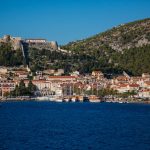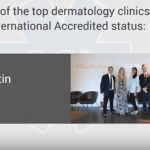March 5, 2019 – Last month it emerged that the Zagreb Tourist Board spent 29,000 euro on a tourism conference which disappeared. This month’s story looks at a US$50,000 investment in a health strategy document. Oh dear.
I love living in Croatia, I really do. And as I have written previously, life in The Beautiful Croatia is addictive, and I genuinely don’t think I could live anywhere else; a little like malaria, once Croatia gets under your skin, there is no escape.
It used to be a blissful and happy existence, living on an idyllic Dalmatian island and blogging about happy tourism stories all day over a cold one in a cafe on the main square.
And then I started a national news portal, and I started to understand how Croatia really works. Looking back, I can’t believe how naive I was, or how much different the reality is to the worlds that most expats here move in. Croatia changed for me, but the change only sucked me in deeper. I wrote about the change some time ago – A Tale of Two Croatias: Before and After the Uhljeb Discovery.
And the more I learned about the corruption and how Croatia really works, the more shocked I became. My Croatian friends were laughing at me, enjoying my progress of discovery of the realities of life here. They still are, as every day brings something new.
Being the first daily Croatian news site with Google News accreditation meant that I had inadvertently got into something larger than planned. Suddenly I realised that TCN had the potential to be a window to the international community to showcase stories which were not about tourism and the endless sunshine. I got my first taste of this when we did the scandalous story of The Sun’s investigative ‘journalist’ who went overland from Istanbul to Paris, via Croatia, without being asked to show his passport once.
After the then Croatian Minister of the Interior posted proof online that not only had he been checked on entry from Serbia, but that he had exited Croatia with a flight from Zagreb to Paris, TCN did the story. Hardly the intrepid overland journey. Our English version of the story went global, with my editorial quoted in Huffington Post and The Sun removing the article and stating that it had changed its freelance hiring practices.
With a growing readership of the Zagreb diplomatic community, EU institutions, international media and businesses working in Croatia, perhaps we could even make a difference, I thought. More Croatian laughter, this time over lunch with a Croatian media friend, who dampened my expectations of what I could achieve. A national name, my friend has uncovered several stories of corruption and incompetence over the years.
“There is no point. Nothing will change. Nobody cares. You can do brilliant work and – apart from professional pride at a job well done – it really doesn’t matter.”
And – sadly – he is right.
Last month, in collaboration with Goran Rihelj from HR Turizam, we told the story of the cancelled CETS tourism conference, and how organisers Andy and Lu Buchanan disappeared with 45,000 of money from the Croatian National and Zagreb tourist boards. When adding all the other payments from would-be exhibitors, the number is probably closer to 200,000 euro. All they left in their wake was a disabled website, lots of unpaid bills, and a recently formed company in Spain with a startup capital of just 3,000 euro.
I was actually surprised at how much media attention the story received, with the Zagreb tourist board director even appearing on the national news to explain what happened. And then, once the Facebook shares and comments subsided, the story died a death.
As it always does in Croatia. No accountability. No consequences.
“It wasn’t even a story,” my media friend said. “With all the other stuff going on here, I am surprised at the amount of coverage.”
Followers of TCN will have noted that we are taking a greater interest in medical tourism in recent times. Like most other people in the country, I had no idea that Croatia had such world-class private healthcare, or the potential to be in the world’s top ten. My journey of discovery started 18 months ago when I wrote a feature story on three of the biggest names – Bagatin Clinic, Svjetlost Eye Clinic and St Catherine Specialty Hospital – which led to Health Tourism is Coming Home: Why Zagreb is the Next Big Medical Tourism Destination.
My journey of discovery took me to conferences in Crikvenica and Zagreb, wellness centres in Krapinske Toplice, clinics in Split, and interviews with some of the biggest names in the medical tourism industry – Keith Pollard, Editor in Chief of International Medical Travel Journal, Sherene Azli, CEO of the Malaysia Healthcare Travel Council, and global speakers such as Ilan Geva and Dr Prem Jagyasi. All of them in Croatia helping the emerging medical tourism story. And they all said the same thing – Croatian has the potential to be in the top ten medical tourism destinations in the world in 10 years, if only all the stakeholders can come together.
The economic benefits, and the year-round tourism that medical tourism can bring, are plain to see. If Croatia really could be in the world’s top ten in such a growth industry, surely this should be a priority to develop, with a national strategy including stakeholders all singing from the same hymn sheet. But the more I looked at the industry, the more I saw how disorganised it was, with a few trailblazing clinics going their own way. International speakers told me that the Kvarner Health Cluster was better known as a health destination than Croatia itself (well done, Team Kvarner), and Team Malaysia talked of their hashtag #WeWinTogether and how the ONLY strategy can be to build the national brand first and go from there.
It would not be correct to state that official bodies are not investing in medical tourism. They are. A speaker from the national tourism board told a conference I attended in Crikvenica that they had invested 4 million kuna, without giving any specifics. And then I heard stories from various sources that the Zagreb Tourist Board had invested 100,000 euro into a health tourism strategy document for Zagreb (when I asked for confirmation, I was told that the actual amount was US$50,000). While it seemed a little insane to me to do a feasibility study just on one city and not the whole country while the national tourist board was spending millions of kuna on another strategy (#WeWinTogether), at least it was progress.
Or so I thought.
Until I read the report, all 71 pages of it, full of shiny charts and lots of data, much of it with little relevance to Zagreb. And having read it twice, I am still trying to find the strategy.
Fifty thousand dollars.
Even before we sit down to read this enlightening document (parts of which I doubt were written by a native speaker due to numerous spelling and grammatical errors), the first alarm bell went off when looking at some of the shiny charts. I would like to publish examples here, but reproduction without permission is strictly prohibited, so you can take a look for yourself. Several of the charts have a copyright of 2017-8, while citing another copyrighted source dating back to 2015. So, for our fifty thousand dollars, we are being treated to data which is four years old.
Not only that, but once you start reading, there are other gems to behold. Did you know, for example, that in 2014, 28 million Italians holidayed overnight abroad? Great data from five years ago. Or that in 2015, Visa revealed that German households spent $74.4 on travel? Four years ago.
Fifty thousand dollars.
The impression I had on reading this document is that it had some quite useful general data on the global health tourism industry, most of which was barely relevant to Zagreb. The section on penetrating the US market is a classic example. More than two pages of statistics and facts are given over to the American market. The recommended strategy (this is what you get for $50,000) seems to be that Zagreb has good affordable healthcare and it should market that to American tourists and also make direct contact with American companies.
That’s it.
And the sad thing is, the report misses out completely on the biggest opportunity Croatia has from the North American market – its diaspora.
As Professor Nikica Gabric, founder of the pioneering Svjetlost Eye Clinic, said in the video above:
“What we should do first is let Croats who live around the world know about the quality and potential of health tourism in Croatia. And then the Croatian diaspora will be the best ambassadors in their communities to explain that in addition to being a beautiful and safe country, they can get quality medical care for significantly less money.”
The love for the homeland is real, and the Croatian diaspora has been sending back billions over the years, and many are very willing to buy Croatian any time they can. So much so in fact that last week we reported on the fact that Croatian diaspora remittances are now bigger than foreign investment in Croatia – some two billion euro.
There are an estimated 1.2 million Croatian diaspora in the United States, about 40% of the global Croatian diaspora and the source of a large chunk of that 2 billion.
It is something that the Zagreb Tourist Board seems to be unaware of. Apart from a passing reference to the diaspora in Germany, I could not find any inclusion of the diaspora as part of the strategy. Having read the report, I sent some questions to the Zagreb Tourist Board, which they were kind enough to answer. I asked about the lack of diaspora focus in the document.
“Our diaspora is mostly located in targeted countries such as Germany, Austria, Slovenia and Italy.”
Really?
There are an estimated 3 million people in the Croatian diaspora. According to figures published a few years ago, here are the top 6 counties:
– United States 1 200 000
– Germany 350 000
– Argentina 250 000
– Australia 250 000
– Canada 250,000
– Chile 200 000
About 2.15 million people, 70% of the diaspora, which last year sent back 2 billion euro, but not a target group for incoming health tourism, despite the fact that many come on holiday to Croatia every year and do not have to be targeted as the non-diaspora American market.
Surely, as Professor Gabric states, the diaspora is the place to start. Not only with their own treatment, but talking to friends in the pubs of Dublin, Munich and Stockholm, about how Croatia is a fantastic tourist destination where you can pay for your holiday with medical tourism savings.
So what are the target countries identified? Slovenia, Italy, Austria, Germany, Russia, the United States, and the United Arab Emirates.
Not the UK? I was surprised at the omission. I was even more surprised when I read some of the info in the report. Apparently about 6% of Brits go to Croatia already for dental treatment, so the market is already there and just needs to be developed. Croatia is increasingly popular with Brits and only two hours away. There is a culture of heading to this part of the world for dental and other healthcare treatment from the UK. So much so, the report itself notes, that Hungary generated $600 million from dental tourism back in 2008. If Hungary can do it, why can’t Croatia – Keith Pollard told me that Croatia could take 25% of that market if it got organised. The Zagreb report even has statistics on who is going for treatment. Of the 60,000 dental tourists annually, 23,500 are British, followed by Austria (16,000) and Germany (13,500).
But the UK is not a target market for Zagreb.
The report talks about the importance of Zagreb Airport. It also explains how other countries partner with the national airline, to provide discounts for health tourists to the country – 50% from Turkish Airlines for example. Malaysia also has a dedicated medical tourism arrivals hall at its airports. So it was something of a surprise in the report when I got to another shiny chart listing all the stakeholders who should be involved in developing Zagreb’s health tourism strategy.
Croatia Airlines and Zagreb Airport did not make the list – they are not stakeholders in developing Zagreb’s medical tourism strategy.
There are lots of charts, all beautifully presented. One of my favourites is a price comparison for certain medical procedures – very useful. Except that the price comparison is limited to just three countries – Croatia, UK and Italy. Quite why the UK is included if it is not a target country is an interesting question, but not as interesting as why there is no data to compare with the countries which are targeted.
Fifty thousand dollars.
The only firm conclusion I took away from this report was the recommendation to form a central coordinating body called ZAMTO to move Zagreb medical tourism forward. No sh!t, Sherlock, why didn’t we think of that?
I asked the Zagreb Tourist Board if they had learned anything from the report, and if so, what?
“Having international partner gives us more objective approach, we find especially interesting SWOT analysis of current situation regarding the health tourism in Zagreb and Croatia.”
Q. Apart from the fairly obvious point that a central coordinating body (ZAMTO) should be formed to promote medical tourism, the report was very light on concrete suggestions. What other concrete suggestions and recommendations did the study have?
A.Creating central coordinating body (ZAMTO) is highly valuable insight and we believe that creation is just one small step in making the organization work since its role should be to bring together the key stakeholders.
Hmmm.
I asked several industry professionals if they had read the report and if yes, what had they learned. There was a consensus.
Absolutely nothing.
I could go on about the omission of Zagreb’s strengths (it has 3 of the top 6 dermatology clinics in Europe, or it is the only place in Europe which is offering the new Mayo Clinic co-founded pharmacogenetic test), but I fear I might lose you.
There was just one more question to ask the Zagreb Tourist Board:
Q. In terms of value for money for the Croatian taxpayer and Zagreb Tourism Board, how would you rate this report out of ten?
A. We would give a high rate for this report, although Croatian taxpayers did not participate in it, since ZTB budget is derived from the membership fees and tourist tax.
So all is well then.
Ha, my media friend just arrived.
“You are wasting your time, nothing will change.”
“I know.”
“Do you feel better for writing it at least?”
“Not really.”
“Oh. Well let’s go for a beer.”
To follow the latest in the Croatian medical tourism story, follow our dedicated page.










